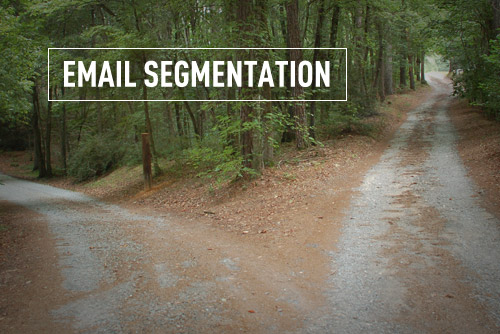You’ve read and read about how you can make the most out of the subscribers you have with email marketing segmentation. But have you actually done it yet?
Probably not... and we understand.
The truth is that most email marketing campaigns aren’t performing as well as they can, and the evidence is clear that segmentation will help solve that problem. But many B2B marketers find it hard to sink their teeth into the process because there’s so many ways to get started.
Rather than give you a run down of the sheer number of possibilities, here’s your guide to segmenting your email lists three clear three steps.
1. Identify creative email marketing segments
We’ve already taken a look at segments like email activity and open rates, geography and time zone, and purchase history. But perhaps you have a unique business proposition for your clients or you’re looking for a more creative way to speak to prospective customers.
The good news is that your subscribers are always giving you new information. Here are five creative ways you can segment your B2B audience for more effective email marketing:
- Survey questions. When you gather information through a survey service like SurveyMonkey or PollDaddy, it pays off twice: first when you analyze the results of the survey, and second when you track the respondent’s survey answers as a marketing segment. When you send out a company survey, include two or three divisive questions that will tell you more about your clients. Save users who select the same answer to a question into a new list and send an email blast referencing their selection.
- Link clickers. You can also gather information about your email subscribers based on which links they have clicked in previous email campaigns. If they clicked on one or two, be sure to give them more of what they like! For the group that opened your email but did not click on any links, try a different approach that’s off the beaten path to hook them.
- Persona. One of our favorite ways to segment an email list is by persona. If you have personas for your ideal customers or existing customers, you can send them different types of messages with content relevant to them.
- Lifecycle stage. You have the opportunity to send different information to current customers than target companies. You may focus on sending prospects educational content, while you might send existing customers new information on your products that help them get the most out of the product.
- Twitter engagement. The future is here! Depending on your industry, you might find it valuable to segment your audience by social media outlet, like MailChimp's Twitter Tailored audiences for select Twitter partners. You can also encourage more newsletter referrals with Twitter’s Lead Generation Cards, which allow users to subscribe within the platform with one click.
- Generational preferences. Even more specific than age, segmenting by the four main generations can give you a lot to go on. The Millennial, Generation X, Baby Boomer, and Mature generations all have different communication styles, interests, and preferences. Segment and write to them, from your salutation (“Greetings,” or “Hey,”) to your closing (“Sincerely,” or “Caio”) to speak their language and earn their trust.
2. Create your email marketing segments
Your willingness to segment is there, but the technical expertise is lacking. Fortunately, today’s email marketing applications are making it easier and easier to segment and organize email lists.
It may take some initial tweaking, but once you have your lists set up you’ll find it’s worth the time! Here are links to each major email marketing software’s guide to segmenting within its platform:
3. Brainstorm creative content ideas for email segments
When it comes to email content, one size does not fit all. Now that you’ve identified and set up your segments, it’s time to tailor your lead nurturing content to each. However, unless you’re a seasoned copywriter, you might be stuck with how to do it. Here are four ways to find new things to write about:
- Write about the unknown need. An unknown need is a problem a client may not know they have, but that you know is coming based on your experience (after all -- it’s your experience they’re paying for!).
- Write about individual interests. Using questions you get during the sales process, customer personas or lead profiles, write content to match your segment's interest. Is there a hot topic in certain segments of your industry? Do several customers face the same issue? These are fair game for email topics.
- Cover the same topic in different formats. If you’ve covered a topic on your blog or as a guide, you can use it for email lead nurturing or in newsletters to a list segment, too. Here are formats you can and should cover for every topic and promote to different email marketing segments based on generation or self-described survey preference:
- Video
- Podcast/Audio Interview
- Slideshare
- Webinar
- Blog Post
- Tweet, Google+, LinkedIn, or Facebook Update
- Image/Infographic
Your email marketing list is a powerful tool to build trust and interest in your prospective clients and delight your existing customers. Make the most of it by identifying effective segments for your business, creating the segments in your email marketing software, and writing content that speaks to them directly.






